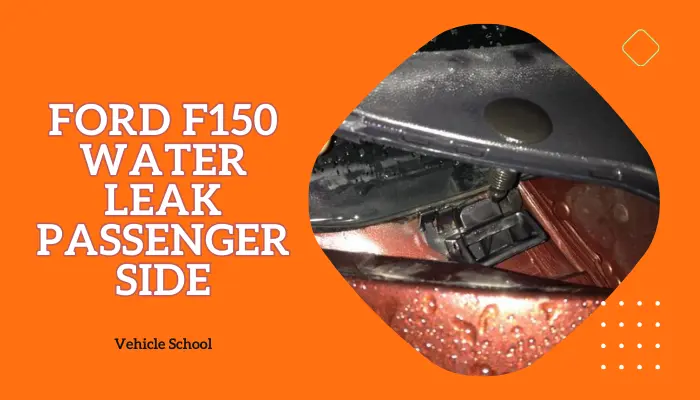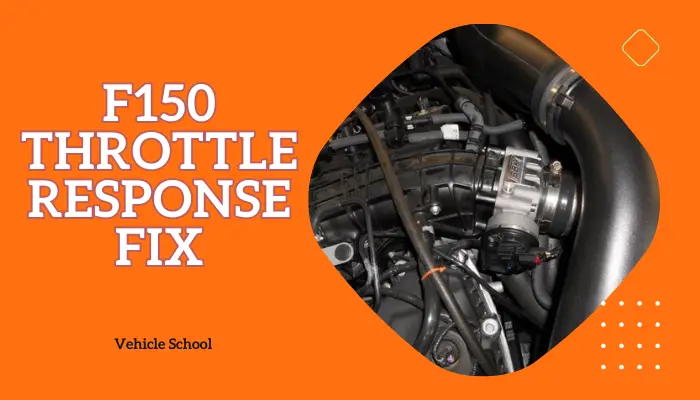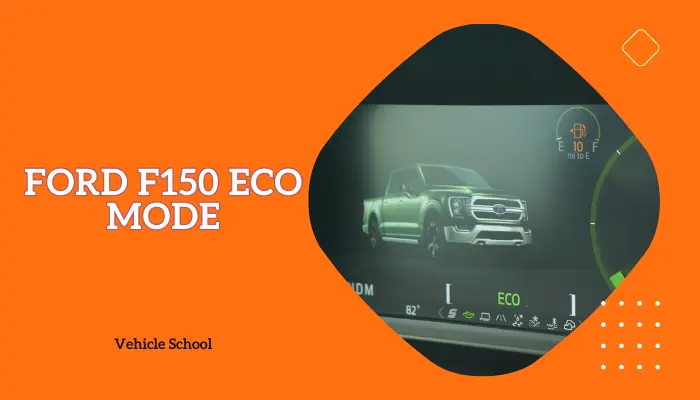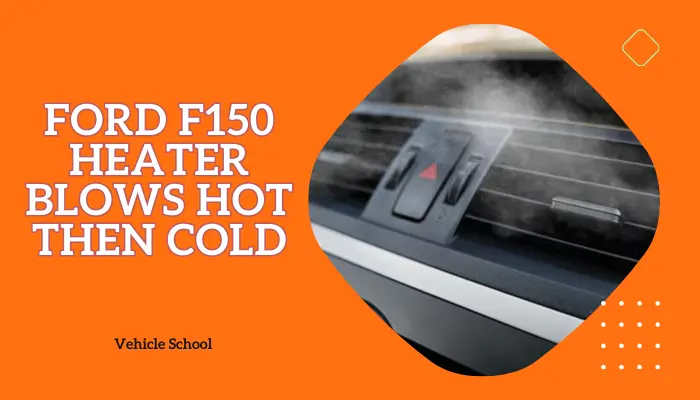Ford F-150 overheating problems are more common than you might think. Many owners reported their F150 overheating at highway speeds, in cold weather, while towing and during various driving conditions.
The causes vary, ranging from coolant leaks to faulty radiator fans. In this article, I’ve explained the reasons behind your F-150’s overheating and provided practical solutions for each. Let’s dive in.
What Causes The Ford F150 To Overheat?
The Ford F150 can overheat due to several reasons, such as issues with the radiator fan, thermostat, heater core, sensors, or factory defects. Resolving these problems typically involves replacing faulty components. Adjusting certain settings, especially when towing, can help prevent overheating.
Here’s a rundown of why this started in the first place. Understanding the root causes before we head to the fixes is a good idea.

1. You Have A Faulty Radiator Fan Clutch
When your F150 overheats while idling and even in cold weather, a faulty radiator might be to blame, especially if the radiator fan isn’t functioning properly at lower speeds.
This happens often for a few reasons. If there’s no fan shroud, it disrupts airflow around the radiator. Low coolant levels, often caused by air leaks in the hose connecting to the coolant reservoir, can limit the radiator’s ability to cool the engine.
However, in the F150s, this problem mostly stems from a bad fan clutch, which can also lead to overheating with AC on.
2. The Thermostat In Your F150 Is Broken Or Inadequate
The Ford F150, especially the EcoBoost models, tends to overheat when towing.
It turns out the cooling system might be struggling to keep up during those heavy-duty hauls.
The stock thermostat might not be opening up enough, and sometimes the cooling fans can cool things down too much, causing temperature swings that lead to overheating.
A bad thermostat can also cause similar issues when towing, so if you’re facing overheating in such situations, it’s best to get a new thermostat either way.
3. You’ve Got A Clogged Heater Core In Your F150
When your Ford F150 overheats and the heater doesn’t work, it’s due to two issues: the thermostat issue above or, more often, a clogged heater core. This core can get blocked by debris or sediment, further limiting heat to the cabin.
Flushing the heater core and replacing the thermostat clears these blockages, fixing both the cabin heat and engine overheating problems.
4. Improper Settings On Your Truck
If you’ve experienced overheating while towing with your F150, especially on steep inclines or in hot weather, it’s because the truck isn’t fully engaging the torque converter.
This oversight can cause excessive heat to build up in the transmission, which ultimately impacts the engine’s performance.
5. Other Radiator Issues
F150s can overheat at highway speeds due to water flow issues like blocked radiator tubes. Collapsing lower radiator hoses also hinder coolant circulation, especially at high speeds.
These problems occur as lime deposits accumulate in the radiator tubes and aging hoses collapse under high RPMs. Both cause inadequate cooling and result in highway overheating.
6. The ECT Sensor In Your Truck Is Faulty
The ECT sensor checks the coolant temperature and sends signals to the truck’s computer.
If there’s a drop in voltage due to a bad connection or sensor, it gives wrong temperature readings. This can make warning lights come on and trigger trouble codes.
It messes with the cooling system, possibly causing the truck to overheat. This is very common with 2018-2020 F150s using 2.7L EcoBoost engines.
7. Manufacturing Problem In 2017 Ford F150 EcoBoost variants
There’s a known issue with 2017 Ford F150 EcoBoost variants equipped with the 10-speed transmission.
On long, steep grades, especially at high altitudes (beyond or around 5,000 feet) and hot days with the air conditioning on, these trucks tend to overheat.
Sometimes, the overheating gets so bad that the vehicle’s computer shuts off the turbocharger, causing a drop in power for a few minutes.
How To Resolve Ford F150 Overheating Issue?
If you have one of the EcoBoost variants I mentioned, I recommend swapping to a newer model like the 2019 EcoBoost or above for a surefire fix.
Besides that, you should also check the coolant level, you might’ve forgotten to top that up.
You might want to look for leaks as well, it’s a lot easier to fix coolant leaks in an F150 compared to other fixes. Now let’s get down to what else you can do about it.
1. Replace the Radiator Fan Clutch
This is usually the best fix, but if you’re still not sure, you can use a tool to diagnose a faulty radiator fan in a Ford F-150.
You might spot the codes P1285 and P1299 if this is the issue.
- Disconnect the battery first.
- Take out the inlet ducting bolts and move them aside.
- Remove the plastic trim clips to get rid of the air deflector.
- Find the fan clutch in the shroud.
- Use a tool to hold the water pump pulley steady.
- Loosen the 36-mm nut on the fan clutch with a pipe wrench.
- Undo the bolts holding the fan shroud to the radiator.
- Unbolt the fan clutch from the water pump pulley and pull it out.
- Put the new fan clutch onto the water pump pulley and bolt it up.
- Slide the fan shroud back in place and bolt it down.
- Reattach any brackets, deflectors, or ducting you took off.
- Reconnect the battery.
- Start the car to make sure the fan spins right.
- Double-check everything is tight and working fine.
Here’s a quick little video guide if you’re not sure what to do:
One more thing, this fix is expensive, though it’s usually the best way to take care of the issue. You can find a radiator fan clutch at a wide price range.
There are cheap ones for around $50, all the way to genuine OEM Ford Radiator Fan Clutches which cost as much as $350.
2. Change The Thermostat
Switching to a 160-degree thermostat instead of the stock one will both fix the problem and make sure it won’t happen again, so give that a try.
- Open the hood and disconnect the negative battery cable.
- Drain the cooling system by removing the radiator drain plug and capturing the coolant.
- Check and replace damaged hoses or clamps.
- Remove the thermostat housing cover and the old thermostat.
- Clean the housing and install a new thermostat with O-ring.
- Reattach the housing cover securely.
- Refill the cooling system with new coolant.
- Start the engine and check for leaks.
- Ensure proper heater output to confirm air purging.
I’ve only provided the basics of the replacement process, as this one is a more hands-on fix. These steps apply to 2015–2017 F150s.
If you’ve got a different year, you can check out this similar video guide:
Thermostats vary in pricing as well, though there’s not as much of a gap as there is with fan clutches. You can find them for $10-$70.
Changing the stock thermostat to an aftermarket thermostat with a lower temperature limit will also solve the issue of loud fan noise in F150.
3. Flush The Heater Core
- Gather these tools: clear hose matching ID and OD heater core hose, surface thermometer, white vinegar, new antifreeze, and flush kit.
- Warm up the vehicle until the temperature gauge is mid-level, then turn on the heat.
- Measure the pre-flush air temperature with a surface thermometer.
- Allow the vehicle to cool for 30 minutes.
- Locate heater core hoses beneath the firewall.
- Drain the radiator using a plug on the passenger side.
- Disconnect hoses from the heater core.
- Attach flush kit adapters to hoses.
- Flush the heater core with water via the clear hose connected to the flush kit.
- Fill the hose with white vinegar and let sit for 1 hour.
- Flush vinegar and debris with water.
- Reconnect hoses, ensuring o-rings are secure.
- Refill the radiator with new antifreeze using a funnel.
- Dispose of the old antifreeze correctly.
This is one of the cheaper fixes, even with the antifreeze and flush kit, you won’t have to pay much more than $50 to get the whole thing done by yourself.
4. Adjust Settings For Towing
Whenever you’re on steep hills, shift down a gear and avoid using higher gears like 5 and 6. This will go a long way towards keeping the transmission cooler. Besides that, you can also do the following:
- Make sure the torque converter is working so there’s no transmission slipping and engine strain.
- Keep an eye on the transmission temperature, especially when towing. Consider using a gauge for this.
- Regularly check the radiator and transmission fluid to ensure they’re working well and keeping everything cool.
5. Change The ECT Sensor
- Make sure all the coolant is out of the system.
- Swap out the old heater hose with a new one that’s got the ECT sensor.
- Unplug connector C1047 and hook up the jumper harness.
- Thread the harness under the PCV and EVAP lines, across the engine, and plug it into the ECT sensor.
- Clip the harness securely onto the heater hose.
- Use retainers to keep the jumper harness in place on the engine harness, back where it won’t get in the way.
- Fill up the cooling system with coolant again.
- Don’t forget to reprogram the PCM once everything’s hooked up.
This one is a fairly cheap fix as well, you’ll just need to get a new $20-$50 ECT sensor.
Note: If you see the diagnostics tool showing a prompt including the code “P552_27L_OverheatQ”, that means the fix won’t apply correctly. Your software isn’t the latest version, so you’ll have to update it first.
| If none of the other fixes worked, you can try to check for other radiator issues by looking for blocked radiator tubes – either clean or replace them. You might need to replace any collapsing lower radiator hoses as well if that doesn’t help. |
FAQs
Do EcoBoost engines usually run hot?
No, they don’t. Some older models just glitched from the factory.
Closing Thoughts
And there you have it, all the fixes to get your engine back in perfect health.
Don’t sweat the overheating too much, your engine won’t go boom on you right away, but ignoring the issues will put a sizable dent in your truck’s longevity.
Follow my guide, and your Ford F150 be it Raptor or Lightning, will be cruising cool in no time.







